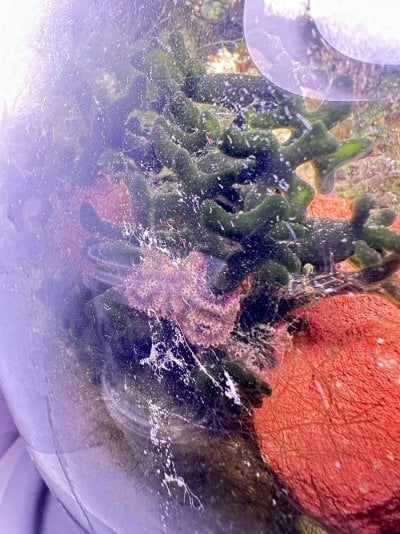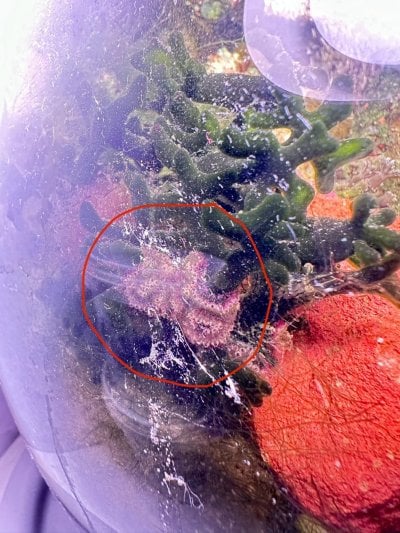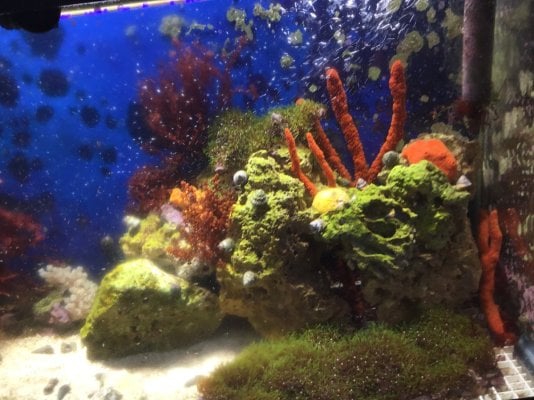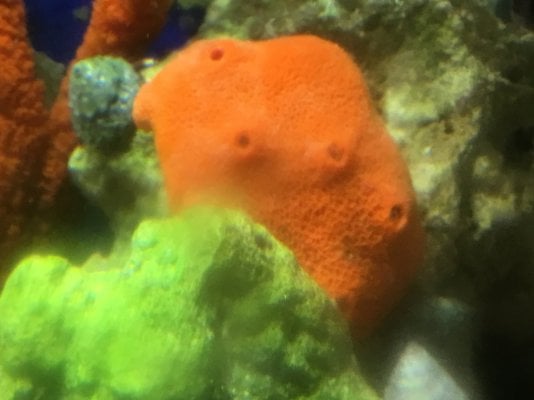Navigation
Install the app
How to install the app on iOS
Follow along with the video below to see how to install our site as a web app on your home screen.
Note: This feature may not be available in some browsers.
More options
You are using an out of date browser. It may not display this or other websites correctly.
You should upgrade or use an alternative browser.
You should upgrade or use an alternative browser.
Can anyone identify this “thing”
- Thread starter Doles
- Start date
-
- Tags
- algae idenfitifaction
- Tagged users None
What thing are you asking for? The only thing I can recognize is melted green army men.
No, but it is slowly growingI have had something similar to that in my tank a long time ago. I was never able to figure it out. I thought it was eggs of some sort. Does it move?
Those are colonial tunicates - harmless filter feeders, but some species can be a bit invasive. You should be able to scrape them off if they get out of hand though.
Are you sure?- Tunicates usually have a different colonial morphologyIs it maybe a sponge?
Those are colonial tunicates - harmless filter feeders, but some species can be a bit invasive. You should be able to scrape them off if they get out of hand though.
Tunicates are bioindicators of a mature reef.
Yeah, those are definitely colonial tunicates. For some examples of other colonial tunicates see the second quote below:Are you sure?- Tunicates usually have a different colonial morphology
the little funnels around the outside are the oral siphons (the incurrent siphons - also known as buccal siphons) and the large mouth in the center would be the common cloacal siphon (the shared outcurrent siphon). So, the water would flow in through the oral siphons (then out through the individual zooid - each tunicate in the colony - atrial siphons which are hidden inside the common tunic - which is basically the skin shared by the whole colony) to the common cloaca and out through the common cloacal siphon.
Haha, yeah sorry - that's part of why I threw in the TLDR at the bottom there. Here are some photos of colonial tunicates with similar body structure (and some with - from what I can tell - similar coloration) to help decide if it is a colonial tunicate:


(The two above images are from here: https://www.mdpi.com/1424-2818/14/11/977 )
And the link below has a bunch more pics (some are different colonial tunicates like above, some are solitary tunicates):

Ascideacea
www.floridamuseum.ufl.edu
Looks great, definitely adds colour
Following
Following
Agreed with the above, but, OP, if you don't know where it came from, I'd guess Botrylloides violaceus - it generally comes in either orange, or some variation of this pink/white mix, sometimes with a little orange thrown in (see the links below):If you identify where the rock came from, it would assist in research.
description of Botrylloides violaceus - Orange cloak sea squirt

Gulf Live Rock.com
 gulfliverock.com
gulfliverock.com
Check out this list of hitchhikers from GOM, Gulf of Mexico:
Colorful Bryozones are a favorite as well as are red encrusting sponges and limpets.
Read carefully as this looks to be highly invasive:
Botrylloides violaceus is native to the Northwest Pacific from northern Japan to southern Korea and northern China. It has been widely introduced to the Northeast Pacific, the Northwest Atlantic, and parts of the Northeast Atlantic. On the West Coast of North America, it was first discovered in Santa Barbara, California in 1966 and has since spread along the coast from Mexico to Alaska. On the East Coast, it was found in New England in the late 1970s and can now be found from the Chesapeake Bay to Newfoundland, Canada. It is a common fouling organism throughout much of its introduced range. It frequently displaces other fouling organisms, including native and introduced tunicates, bryozoans, barnacles, and mussels through competition for space and food.
Image Credit: Melissa Frey, Royal BC Museum, Canada
Botrylloides violaceus is native to the Northwest Pacific from northern Japan to southern Korea and northern China. It has been widely introduced to the Northeast Pacific, the Northwest Atlantic, and parts of the Northeast Atlantic. On the West Coast of North America, it was first discovered in Santa Barbara, California in 1966 and has since spread along the coast from Mexico to Alaska. On the East Coast, it was found in New England in the late 1970s and can now be found from the Chesapeake Bay to Newfoundland, Canada. It is a common fouling organism throughout much of its introduced range. It frequently displaces other fouling organisms, including native and introduced tunicates, bryozoans, barnacles, and mussels through competition for space and food.
Image Credit: Melissa Frey, Royal BC Museum, Canada
Similar threads
- Replies
- 4
- Views
- 125
- Replies
- 12
- Views
- 267





















